If you’ve been scrolling through Pinterest lately and noticed your feed flooded with gorgeous Korean houses, you’re not alone. And honestly? It’s about time these architectural gems got the attention they deserve. We’re living in the age of K-everything – K-pop, K-beauty, K-dramas – so it makes perfect sense that Korean home design is having its moment too.
Here’s the thing about Korean houses: they’re not just pretty to look at (though they definitely are that). Unlike most home design trends that focus on looking good for Instagram, Korean architecture actually makes your daily life better. There’s this incredible balance between simplicity and warmth, between honoring tradition and embracing modern convenience. Plus, if you’ve ever watched a K-drama and found yourself drooling over those gorgeous apartments and hanoks, now you can actually recreate that aesthetic.
What’s All the Fuss About Korean Houses?
Korean home design isn’t just another trend – it’s rooted in thousands of years of figuring out how to create spaces that actually work for real life. Take the ondol heating system, for example. Instead of heating air that just rises and escapes, it warms the floors directly. The result? That incredibly cozy feeling that makes you want to curl up on the floor with a good book.
Then there’s the whole indoor-outdoor thing. Korean houses excel at making you feel connected to nature without having to deal with bugs, weather, or maintenance headaches. Courtyards, sliding doors that disappear completely, gardens that look gorgeous year-round – it’s like having your own private resort.
The best part? Modern Korean architects are taking these ancient principles and mixing them with contemporary design in ways that feel fresh and totally livable. You get all that philosophical depth without feeling like you’re living in a museum. No wonder everyone from Seoul to suburban America is falling in love with this approach.
12 Korean House Designs That’ll Make You Start House Hunting in Seoul
1. Modern Korean Hanok Revival
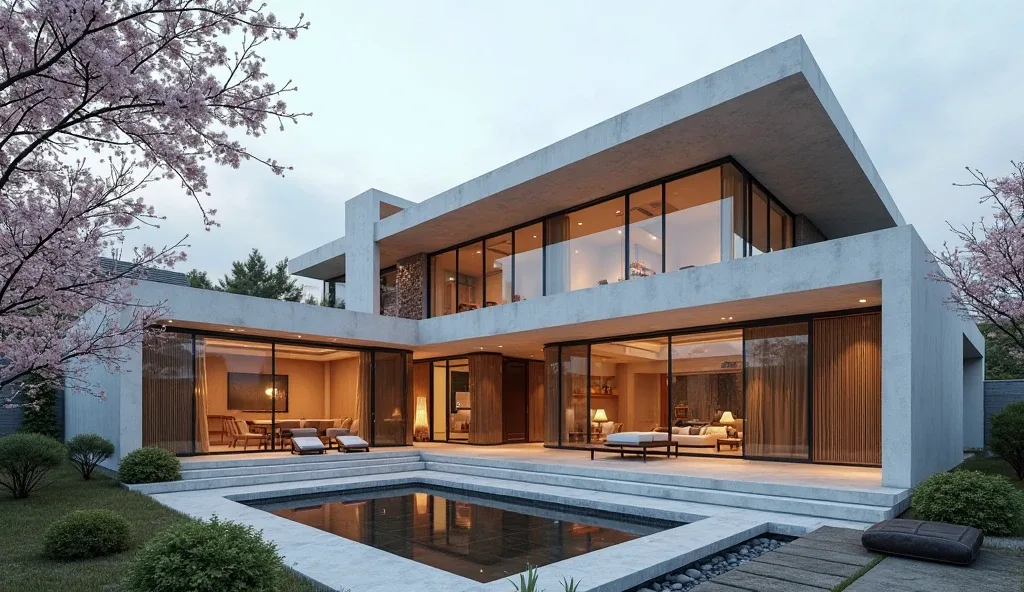
This is where traditional Korean architecture gets the ultimate glow-up. You know those classic curved rooflines that hanoks are famous for? Now picture them paired with sleek glass walls that flood the space with natural light. It’s like someone took a 500-year-old design and gave it a contemporary makeover without losing any of the magic.
The zen courtyard garden with bamboo water features creates this perfect soundtrack that drowns out city noise. Cherry blossom trees provide seasonal drama – imagine waking up to pink petals drifting past your floor-to-ceiling windows every spring. Those traditional wooden hanji screen doors slide away completely, so your living room basically becomes part of the garden.
This design proves you can honor tradition while embracing modern convenience. It’s sophisticated enough for Architectural Digest but comfortable enough that you’d actually want to live there every day.
2. Jeju Island Stone House Sanctuary
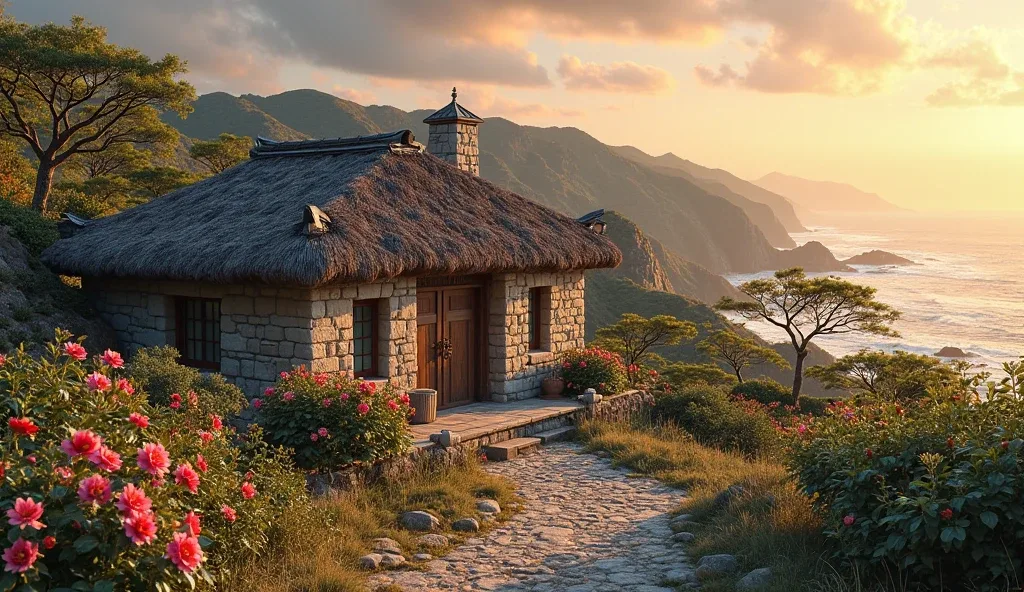
Jeju Island’s volcanic landscape has created this unique building tradition using local stone, and the results are absolutely incredible. These houses literally look like they grew from the landscape – the volcanic rock walls seem like they’ve been there forever, while thatched roof elements give you that authentic island vibe.
The ocean views are obviously stunning, but it’s the native landscaping that really makes this special. Camellia flowers bloom in winter when everything else is dead, and those famous Jeju tangerine trees provide fresh fruit right outside your door. The coastal cliffs create this dramatic backdrop that changes with every storm and sunset.
Living here feels like a permanent vacation, but it’s the authentic island architecture that keeps it grounded. It’s luxury that comes from the place itself, not from expensive imported materials.
3. Seoul Apartment Balcony Garden Oasis
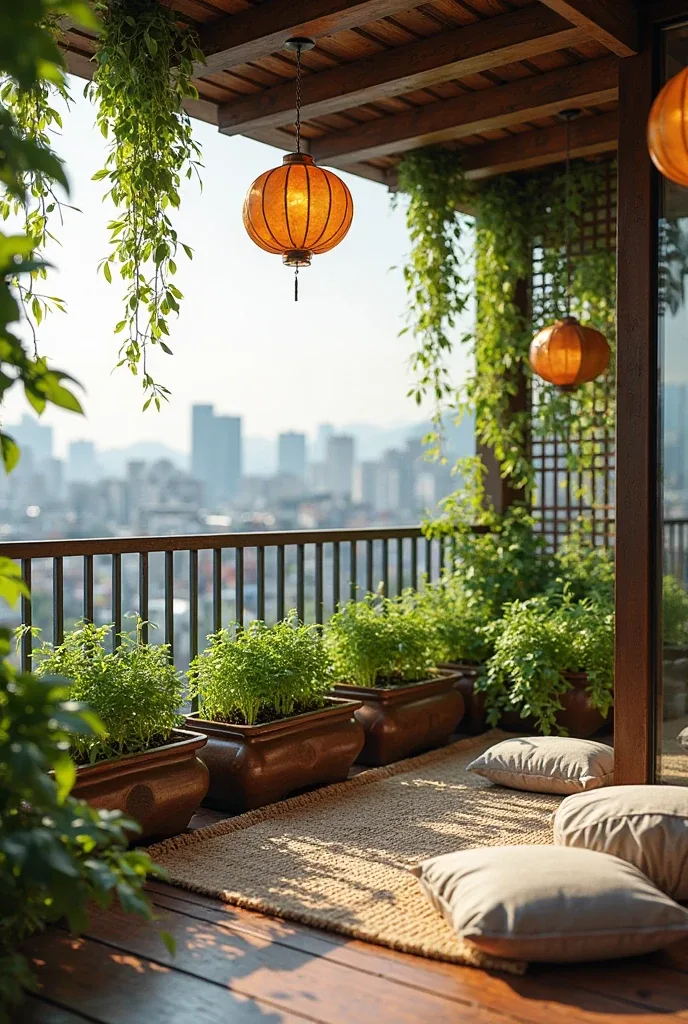
Here’s something that might surprise you – Korean apartment living can be absolutely gorgeous. Most people think small apartment = boring design, but Koreans have figured out how to transform tiny balconies into garden sanctuaries that rival expensive penthouses.
The secret is vertical herb gardens and traditional Korean ceramic planters that maximize every inch of space. Floor seating with Korean cushions takes up way less room than bulky furniture while creating these intimate gathering spots. Hanging Korean lanterns provide warm lighting without cluttering up surfaces.
The city skyline views become your constantly changing artwork. Plus, you can grow your own herbs for Korean cooking – imagine making kimchi with vegetables you grew on your Seoul apartment balcony.
4. Traditional Bukchon Hanok Village Home

If you want to see Korean architecture at its most authentic, Bukchon village in Seoul is where it’s at. These restored hanoks showcase traditional dancheong painted details – those gorgeous blues, reds, and greens that make Korean temples and palaces so photogenic.
The traditional tile roof (giwa) and wooden lattice windows frame views of inner courtyards (madang) where stone pathways wind through carefully planned gardens. Living here means you’re literally part of Seoul’s living history, with ancient palace walls visible from your windows.
The soft morning light filtering through traditional Korean paper windows creates this gentle glow that makes every morning feel special. It’s like living inside a piece of art that happens to be incredibly functional.
5. Korean Minimalist Concrete House
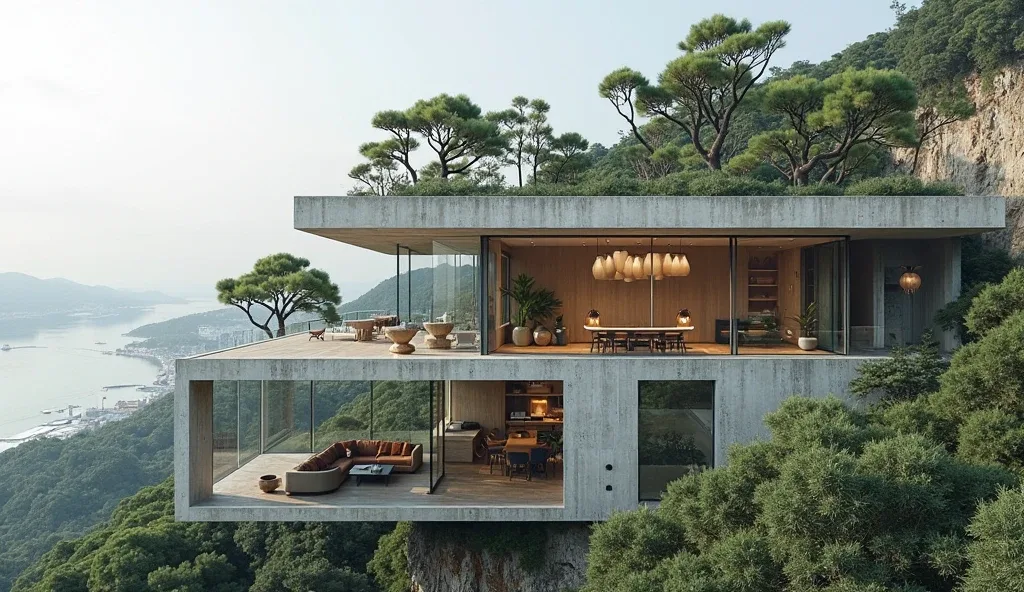
Contemporary Korean architects do minimalism better than anyone else. This design strips everything down to pure essentials – exposed concrete walls, floor-to-ceiling windows, rooftop gardens that bring nature into urban settings without any fuss.
The Seoul Han River views become your daily entertainment, changing with weather and seasons. Korean ceramic art installations add cultural touches without cluttering up the clean lines. It’s minimalism with soul, which is way harder to pull off than it looks.
The key here is understanding that Korean minimalism isn’t about emptiness – it’s about making space for what really matters. Every single element serves both function and beauty.
6. Gangnam District Luxury Penthouse
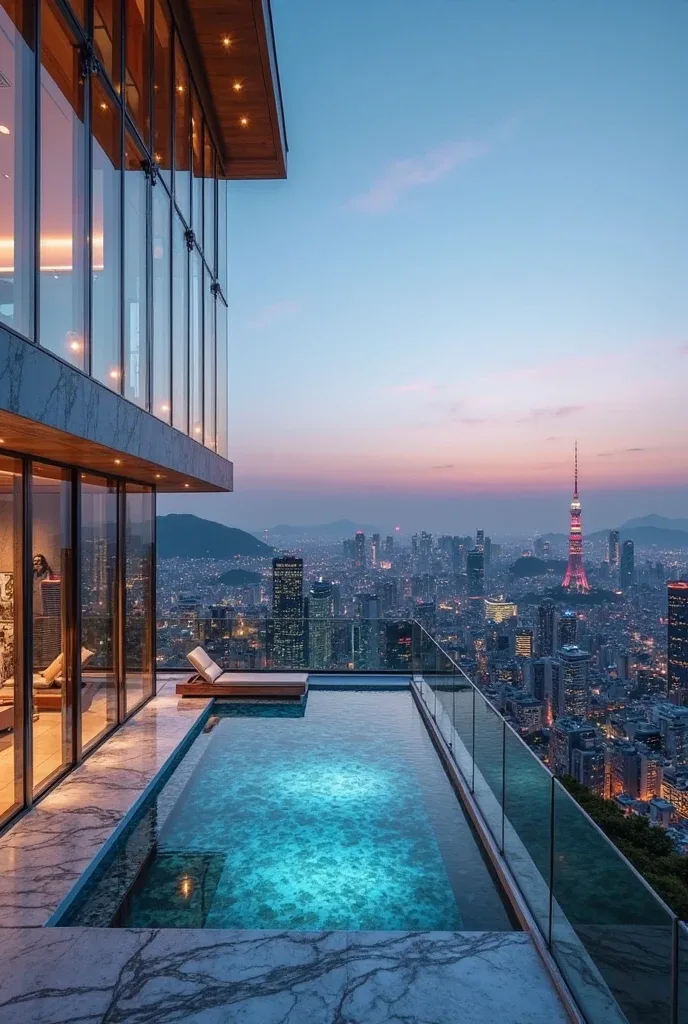
Yes, Gangnam style is a real place, and the luxury penthouses there are absolutely insane. We’re talking panoramic Seoul skyline views, Korean marble interiors, and traditional Korean art collections displayed like museum pieces.
The rooftop infinity pool with Namsan Tower backdrop creates those Instagram moments everyone’s after. But it’s the way Korean contemporary design balances luxury with restraint that makes these spaces feel sophisticated rather than flashy. Evening city lights reflecting on all that glass create this magical urban glow.
This is Korean luxury at its most confident – embracing both traditional culture and contemporary success without any apology.
7. Rural Korean Farmhouse Retreat
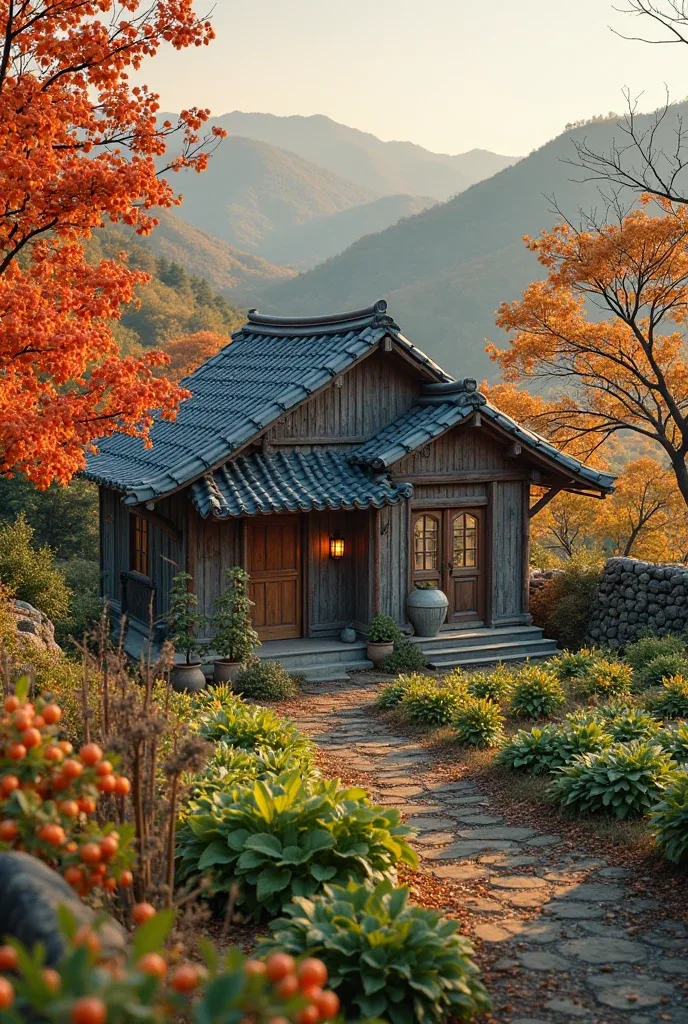
Korean countryside living offers a completely different pace, and these traditional farmhouses show off the beauty of agricultural life. Persimmon trees heavy with orange fruit, vegetable gardens growing napa cabbage and Korean radish, traditional fermentation jars (onggi) lined up like ceramic sculptures.
The mountain backdrop provides constant drama while autumn foliage creates color shows that rival anything you’ll see in New England. Traditional Korean fencing and farm structures become part of the aesthetic rather than eyesores to hide.
The warm farmhouse lighting creates this cozy glow that makes you want to move to the countryside immediately. It’s the Korean version of hygge – comfort that comes from simplicity and connection to natural rhythms.
8. Korean Courtyard House with Secret Garden
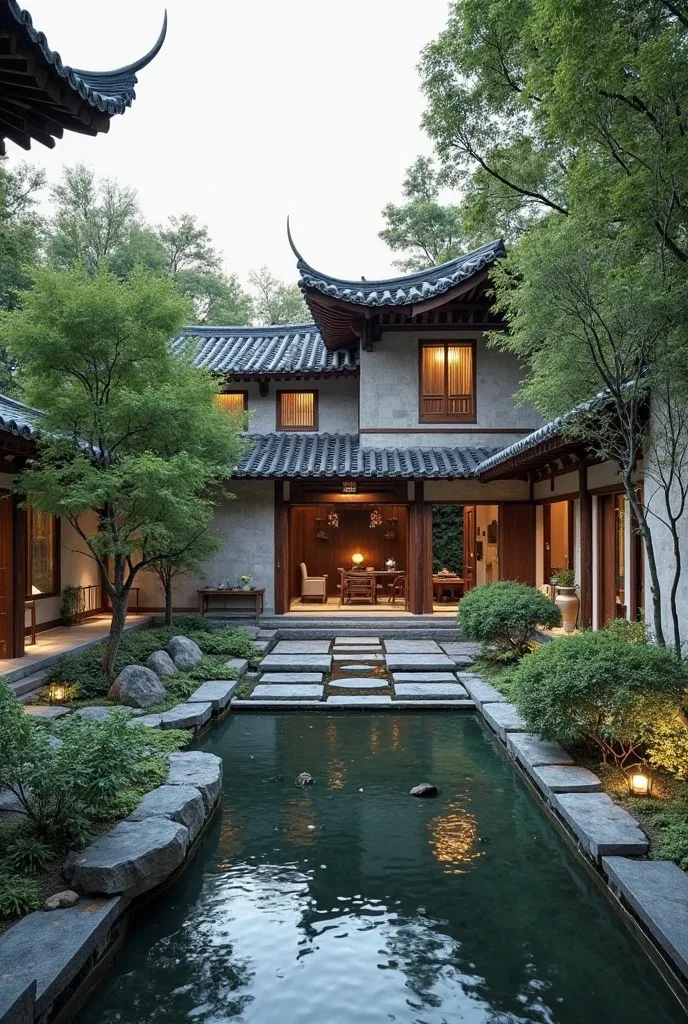
Traditional Korean siheyuan-style courtyard houses are all about creating private worlds within busy environments. Multiple pavilions surround central gardens, with hidden pathways through bamboo groves that reveal secret spaces as you explore your own property.
Korean moon gates and stepping stones across koi ponds create this sense of discovery and journey even within your own home. Privacy walls with wooden gates ensure your sanctuary stays peaceful, while traditional ceramic roof tiles reference classic Korean architecture.
The intimate garden lighting transforms everything after dark, creating different moods for different areas. It’s like having your own private resort that happens to be steeped in centuries of architectural wisdom.
9. Busan Coastal Modern Villa
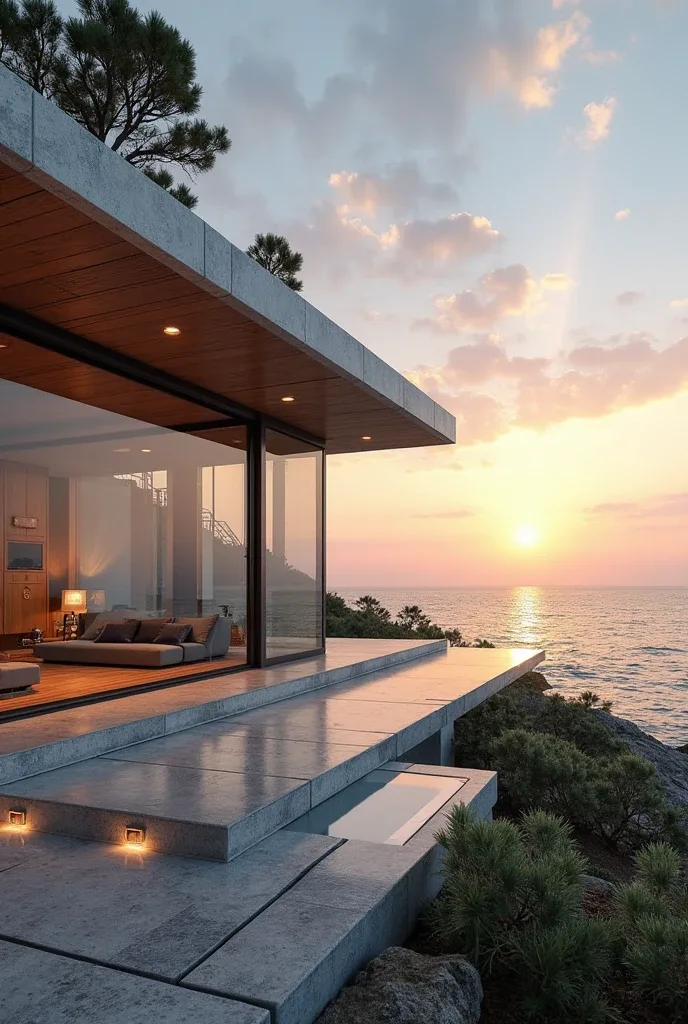
Korea’s seaside city of Busan has developed its own architectural personality, and these coastal villas show it off perfectly. Ocean-facing glass walls frame Busan port views, while traditional Korean ceramic tile accents add cultural depth without feeling forced.
The seaside terrace with Korean BBQ area acknowledges how Koreans actually live – food and gathering are central to everything. Coastal pine landscaping handles salt air like a champ while providing natural beauty and privacy.
This design proves Korean architecture works beautifully anywhere, adapting traditional principles to different climates while maintaining cultural authenticity.
10. Korean Winter House with Ondol System
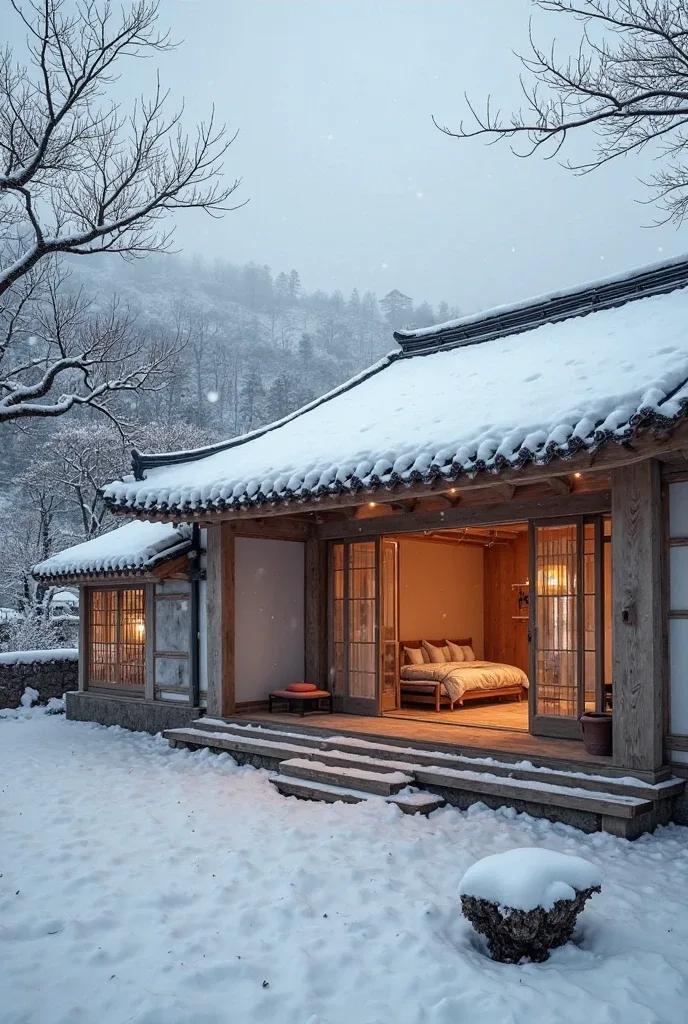
Here’s something uniquely Korean that the rest of the world is finally catching onto – ondol underfloor heating. Instead of heating air that just rises and escapes, ondol warms floors directly. The result is this incredible cozy feeling that’s impossible to describe until you experience it yourself.
Snow-covered traditional roofs and Korean paper windows (hanji) create perfect winter aesthetics, while heated floors make indoor spaces incredibly comfortable. The warm interior glow against snowy landscapes creates dramatic contrast that’s pure magic.
Korean winter gardens with bare persimmon trees provide stark beauty, while cozy interiors with Korean blankets invite you to slow down and actually enjoy winter instead of just surviving it.
11. K-Pop Inspired Modern Korean Home
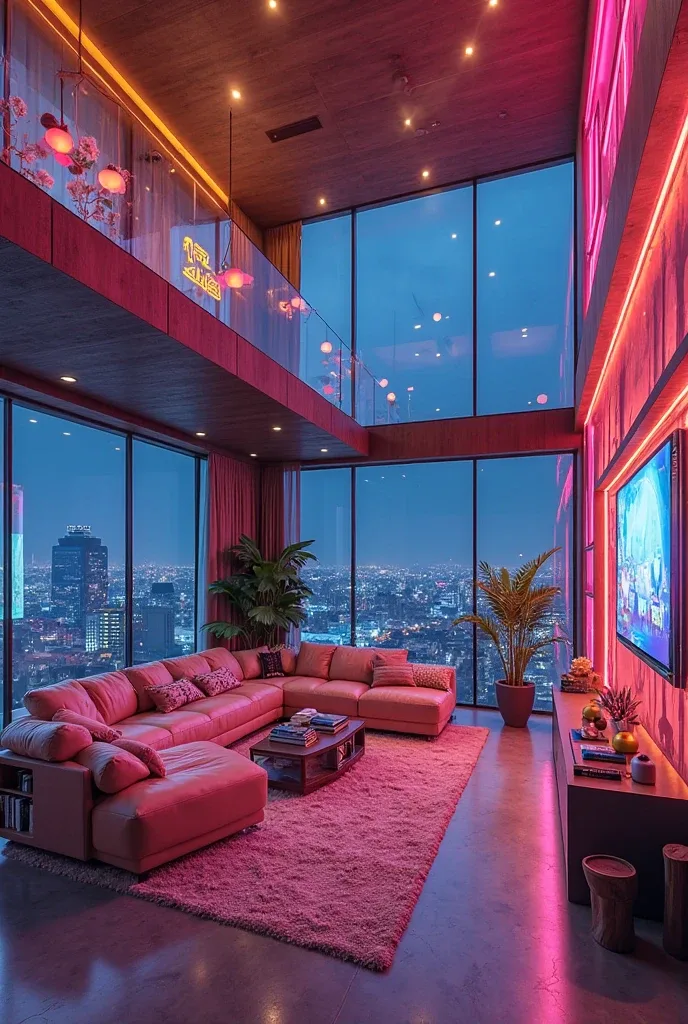
Korean youth culture is influencing home design too, and the results are surprisingly sophisticated. Ultra-trendy Korean millennial houses incorporate K-pop aesthetics with neon lighting accents and vibrant Korean street art influences, but in ways that feel grown-up rather than like a teenager’s bedroom.
Seoul cityscape views and contemporary Korean furniture create urban sophistication, while tech-integrated smart home features reflect Korea’s position as a global technology leader. The nighttime photography potential is incredible – these spaces absolutely come alive after dark.
This approach captures the energy and optimism of modern Korean culture while maintaining real design integrity. It’s trendy without being temporary.
12. Korean Tea House Garden Pavilion
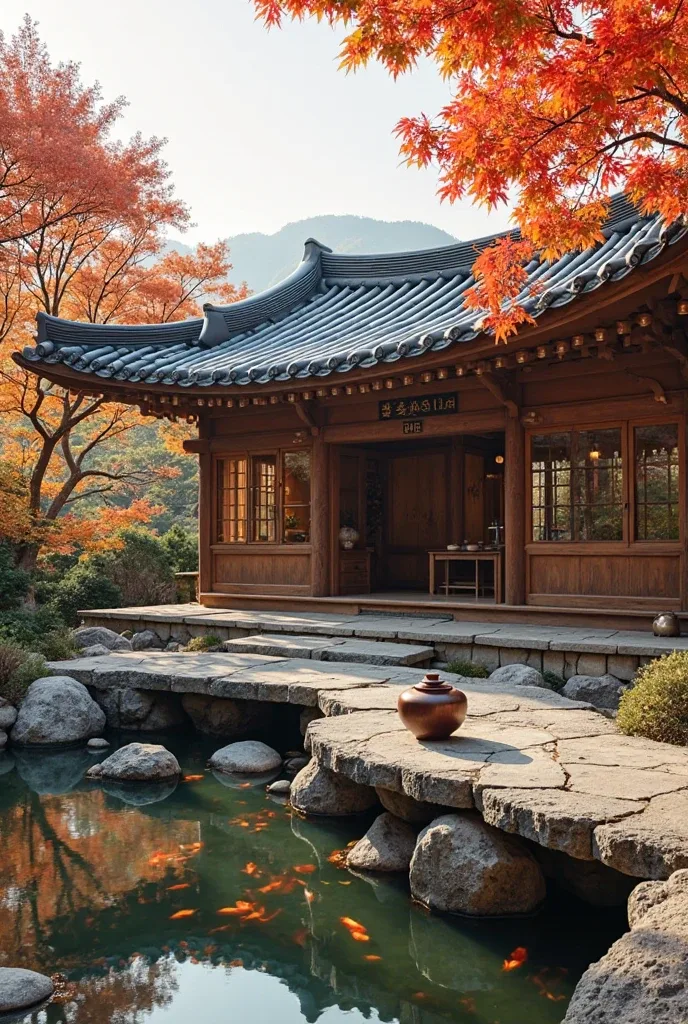
Traditional Korean sarangchae (men’s quarters) get repurposed as modern tea houses, creating dedicated spaces for slowing down and enjoying simple pleasures. Traditional Korean gardens with stone bridges and Korean maple trees provide seasonal beauty and peaceful contemplation.
The ceramic tea sets and traditional Korean roof architecture reference cultural practices while serving contemporary lifestyle needs. Autumn colors create spectacular settings for gathering with friends or finding personal quiet time.
This design celebrates Korean cultural practices around hospitality and contemplation, creating spaces that encourage real connection – both with other people and with yourself.
The Reality Check: What Makes Korean Design Actually Work
The Indoor-Outdoor Magic
Korean houses are incredible at blurring the line between inside and outside. It’s not just about having big windows – it’s about creating spaces that flow naturally from interior to garden to sky. Courtyards, pavilions, and covered outdoor areas create multiple layers of “inside” and “outside” that make homes feel way larger and more connected to nature.
Materials That Get Better with Age
Korean architecture embraces materials that actually improve over time. Wood develops gorgeous patina, stone weathers naturally, ceramic tiles acquire character – these choices create homes that become more beautiful as they age rather than needing constant updates to stay current.
Built-in Flexibility
Traditional Korean homes were designed to adapt to different seasons and uses. Sliding doors, flexible spaces, and multipurpose areas allow rooms to expand, contract, and change function as needed. Modern Korean homes keep this adaptability while adding contemporary conveniences.
Why Korean Houses Are Here to Stay (And Why You Should Care)
Korean home design offers something our fast-paced, cluttered world desperately needs – spaces that actually make you feel better. The combination of ancient wisdom and contemporary innovation creates homes that are both beautiful and functional, trendy and timeless.
As Korean culture continues influencing global design through K-dramas, K-pop, and K-beauty, Korean architecture provides the spatial framework for actually living well. These aren’t just pretty spaces for social media – they’re homes designed around thousands of years of thinking about how to create daily happiness.
Whether you’re drawn to traditional hanok elegance, ultra-modern Seoul sophistication, or rural Korean simplicity, there’s a Korean-inspired approach that can transform how you think about home. The question isn’t whether Korean design is worth exploring – it’s which elements will make your own space feel more like a sanctuary and less like just another place to crash.
Start exploring now, because once you experience that perfect balance of calm and energy that Korean homes provide, everything else will feel either too chaotic or too boring. Korean design has found that sweet spot we’re all looking for.
